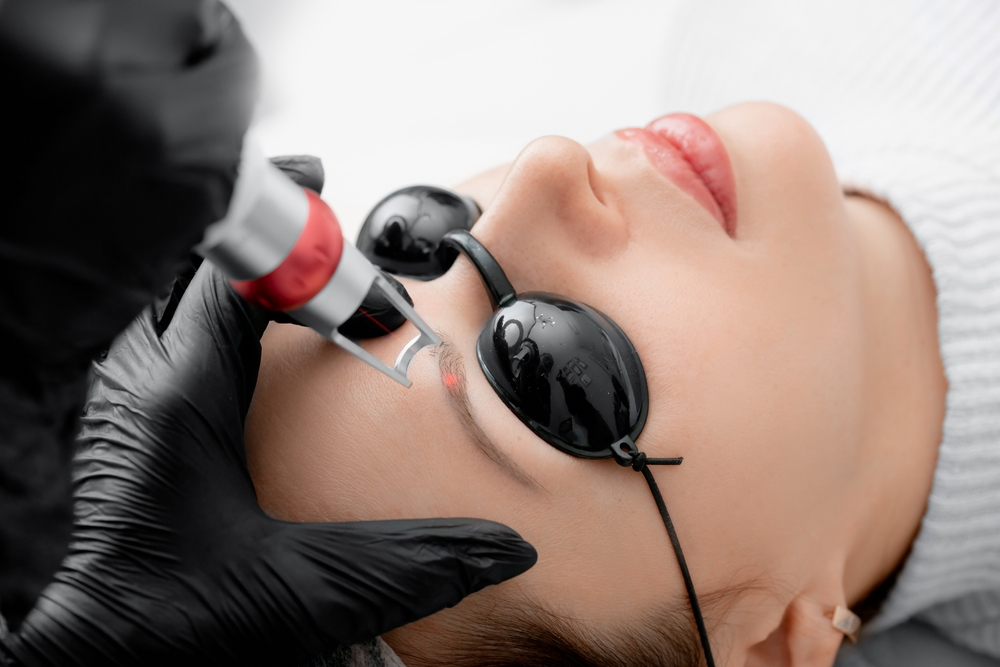Is Microblading Removal Safe for Sensitive Skin?
Microblading removal is a procedure designed to correct or reverse the effects of previous microblading treatments. While generally safe, individuals with sensitive skin may have concerns about the safety and potential risks associated with microblading removal. Let’s delve into whether microblading removal is safe for sensitive skin and explore precautions to ensure a safe and effective procedure.
Understanding Microblading Removal
Microblading removal techniques aim to fade or eliminate the pigment deposited during the initial microblading procedure. Common methods include laser tattoo removal, saline tattoo removal, and chemical solutions. These techniques break down the pigment particles, allowing the body’s natural processes to eliminate them gradually.

Is Microblading Removal Safe for Sensitive Skin?
Microblading removal can be safe for individuals with sensitive skin, but it’s essential to consider several factors to minimize the risk of adverse reactions. Here are some considerations:
1. Consultation with a Professional:
Before undergoing microblading removal, schedule a consultation with a qualified and experienced technician or dermatologist. During the consultation, discuss any skin sensitivities, allergies, or medical conditions that may affect the procedure’s safety and effectiveness. The technician will assess your skin type and condition to determine the most suitable removal method and tailor the treatment accordingly.
2. Patch Test:
For individuals with sensitive skin, a patch test may be recommended to assess how the skin will react to the removal solution or laser treatment. A small area of skin is treated to gauge any adverse reactions, such as redness, swelling, or irritation. This helps determine the appropriate treatment parameters and minimize the risk of complications during the full procedure.
3. Gentle Removal Techniques:
Opt for removal techniques that are gentle on the skin and less likely to cause irritation or inflammation, especially for sensitive skin types. Saline tattoo removal, for example, involves the application of a saline solution to the skin to lift the pigment gradually without causing trauma to the surrounding tissues. Laser tattoo removal, when performed by a skilled technician using appropriate settings, can also be safe for sensitive skin.
4. Post-Treatment Care:
Following microblading removal, adhere to the post-treatment care instructions provided by your technician or dermatologist. This may include avoiding sun exposure, applying soothing creams or ointments, and refraining from picking or scratching the treated area. Proper post-care helps promote healing, reduce discomfort, and minimize the risk of adverse reactions, especially for individuals with sensitive skin.
Conclusion
Microblading removal can be a safe and effective solution for correcting or reversing unwanted pigment from previous microblading treatments. By consulting with a qualified professional, undergoing a patch test, opting for gentle removal techniques, and following post-treatment care instructions diligently, individuals with sensitive skin can undergo microblading removal with confidence.
Additional Insights:
- American Academy of Dermatology (AAD): Access information and resources on skin health, dermatological procedures, and finding qualified dermatologists from the American Academy of Dermatology.
- RealSelf: Read reviews, ask questions, and connect with experts to learn more about cosmetic procedures, including microblading removal, on RealSelf.
- Book Your Microblading Removal Appointment Now – Schedule your microblading removal appointment at Minou Nails Studio in Rajouri Garden and safely eliminate unwanted pigment, even if you have sensitive skin.


